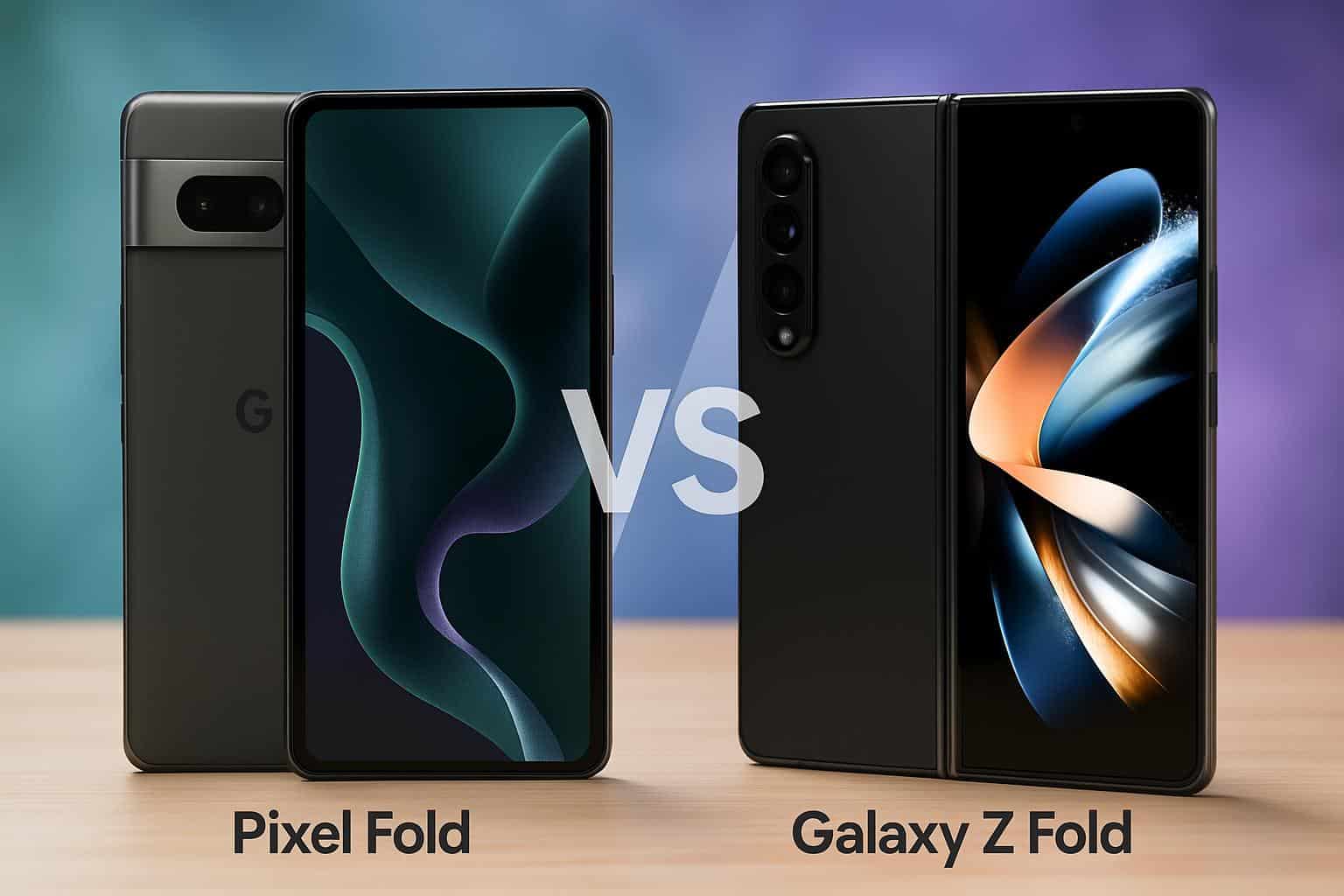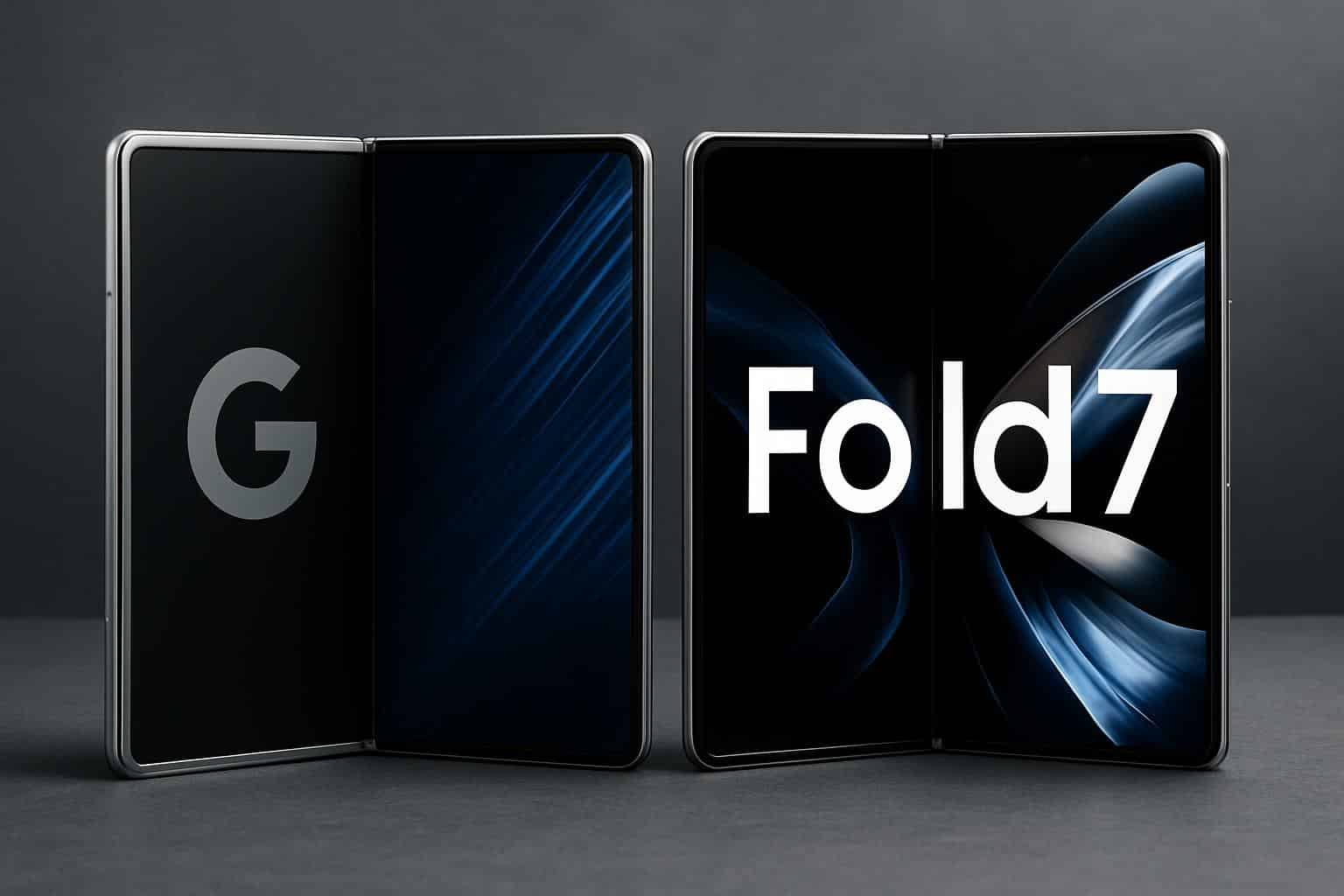We used the Google Pixel 10 Pro Fold and Samsung Galaxy Z Fold 7 side by side for a week, on commutes, camera tests, and long days filled with calls, apps, and work. But the outcome is not a straightforward win for one brand. These book-style foldables both excel and you’ll go with the one that sounds strongest in areas you value such as durability, display quality, AI features, or price.
Design, build quality, and real-world durability compared
Google’s headline win is protection. The Pixel 10 Pro Fold is the first book-style foldable (with a single seam) to have an IP68 rating when it comes to protection against dust and water per the IEC 60529 standard, so that means it’s actually sealed against fine particles. Samsung’s Galaxy Z Fold 7 has an IP48 rating that protects against splashes and bigger particles, but not ultrafine dust. Around sawdust, sand, or desert wind, that delta matters for daily confidence.
- Design, build quality, and real-world durability compared
- Display quality, cover usability, and crease visibility
- Camera performance, video quality, and telephoto reach
- Performance under load, thermal behavior, and battery life
- Software experience, updates, and on-device AI features
- Pricing trends, discounts, and overall value for money
- Final verdict: which foldable fits your priorities best

Samsung counters with hand feel. The Z Fold 7 is incredibly thin and light for a full-size foldable, and the weight balance makes it vanish in an interior jacket pocket. On long reading sessions and commutes, Samsung’s slim form factor saved me from more wrist fatigue than the Pixel. Google’s build feels heavy and solid — that reassuring combination of glass and metal, albeit not as featherlike.
Display quality, cover usability, and crease visibility
Samsung is still ahead on the crease minimalism front. The Z Fold 7’s inner panel is flatter to your fingertip and less visually jarring in bright scenes. For those of you who have avoided foldables because that crease ripped you out of the experience while reading or sketching, Samsung’s version is the most “invisible” we’ve encountered. The Pixel’s inner screen is sharp and colorful, but its fold crease can be caught in raking light more easily than that of the Galaxy, and its glossier finish reflects a tad more in stark office lighting.
From the outside, both cover screens are bright and responsive, but Samsung’s aspect ratio is more in line with a typical bar phone. That way, one-handed typing and quick responses feel more natural when the device is folded. Google’s cover display is comfy too, just ever so slightly less conventional in width — something that you feel when you’re pounding out longer emails.
Camera performance, video quality, and telephoto reach
Specs don’t say everything. Samsung’s 200MP primary camera resolves great detail, and the default processing is punchy and bright. Google’s 48MP primary sensor leans into a more mellow, contrast-heavy look, which is something photographers prefer when editing photos. The big swing, though, is telephoto: the Pixel’s 5x optical reach pulls in tighter, cleaner sideline shots than the Galaxy’s 3x, and this is something that counts at concerts and stadiums but also when shooting cityscapes.
In low light, both phones perform well, but they do things differently. Google relies heavily on computational magic perfected in years of Pixel iterations — skin tones are consistent, highlights are kept at bay, and Night modes hold steady — at the expense of more marquee features. Samsung’s night shots are brighter out of the box and tend to lift shadows. For video, stabilization is excellent on both, and although Samsung can be faster in autofocus during quick pans, Google keeps motion tones looking nice and less jittery in mixed lighting.
Performance under load, thermal behavior, and battery life
And neither phone blinked as I multitasked heavily. We split screens, floated windows, and hopped between photo edits and video calls without stutter. Thermal behavior was better managed on both during 4K recording and navigation; the Galaxy kept slightly cooler with prolonged camera use, while the Pixel’s consistency through a long run of sustained app performance was especially steady when juggling multiple AI-assisted tasks simultaneously.

Battery life grants a full day for both with mixed use. The Z Fold 7’s slimmed-down frame isn’t less enduring, and the Pixel starts to learn some cleverly scheduled tricks as you lean on on-device AI. Wireless charging is a big late Pixel benefit: The Qi2 standard used in PixelSnap includes magnets for a MagSafe-like lock at up to 15W, so existing MagSafe-compatible charging pads, power banks, and mounts often just click and work. That optional flexibility is a stealth quality-of-life upgrade.
Software experience, updates, and on-device AI features
Both phones are powered by the latest version of Android, with each firm committing to seven years of updates. Where they part ways is on AI availability and philosophy. Google throws in a year of Gemini Advanced (Gemini Pro access, creative tools like Veo support when available, and extended cloud storage), whereas Samsung tends to offer six months. If you care about the deepest integration of Google’s generative features — Magic Cue for situation-specific replies, Camera Coach, upgraded call assist — then the Pixel is the more forward-leaning canvas.
Samsung’s Galaxy AI suite is well-rounded and practical, with live translation, AI Select for smart copy, and superb object removal in the photo editor. Multitasking is something that Samsung still excels at: The persistent taskbar, flexible app pairs, and pop-up windows are slick and work every time. Both devices also handle Gemini just fine; it’s only Samsung’s proprietary AI features that remain exclusive to the Z Fold 7.
Pricing trends, discounts, and overall value for money
Street pricing matters. In launch-week shopping, the Galaxy Z Fold 7 received aggressive discounts from many major retailers, cutting several hundred dollars, and, in some cases, pricing it significantly under the Pixel 10 Pro Fold. If you’re bargain hunting, it’s hard to escape the fact that Samsung — less flashy hardware and whatnot — is actually the brand producing the most polished kit at a price you’ll actually pay. Foldables have experienced persistent double-digit growth, IDC’s market watchers point out, and such aggressive pricing is a major reason adoption of the devices is ramping up.
Final verdict: which foldable fits your priorities best
Choose the Pixel 10 Pro Fold if you work or live near dust, care about long-term durability, appreciate the addition of a stronger 5x optical telephoto, and want access to Google’s most recent AI tools matched with Qi2 magnetic charging that’s made to play nice with MagSafe ecosystems. Pick the Galaxy Z Fold 7 if you want the thinnest, lightest feel, the most flush crease, Samsung’s elite multitasking, and the best value when discounts are available.
There’s no outright winner here — we have two great flagships that are targeting different priorities. The better one is the one that fits your daily reality: dust and accessories tilt toward Google, ergonomics and deals lean toward Samsung, as both deliver a big-screen future without the traditional foldable compromises.

